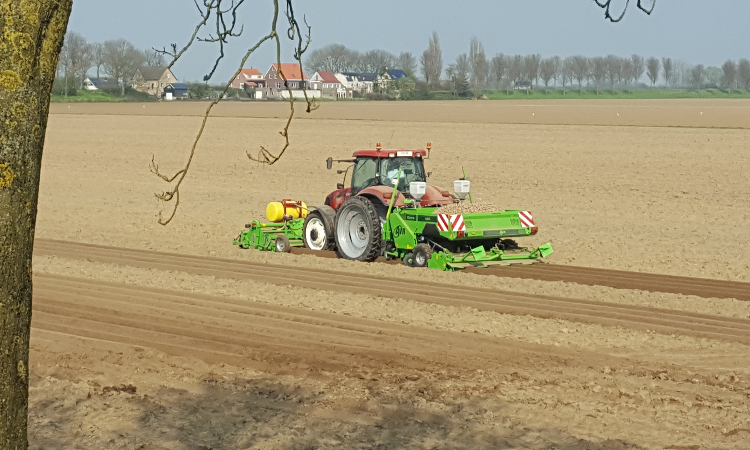With a few more weeks to go in the old season 2020/21, a lot of attention is being paid to the size of the season 2021/22.
Not only had farmers’ associations called for a considerably lower acreage of potatoes, but also for a fundamental review of exploitation costs of growing, harvesting and
warehousing fresh potatoes for the processing industries (frozen and dehydrated).
In reality only 3-5% less surface had been planted (mainly early varieties), according to NEPG (North-Western European Potato Growers).
It shows once again how difficult it is for farmers to reach an agreement on border crossing sectorial level.
Weather conditions during the planting time was not particularly favorable : there was late frost and the soil was too cold, so that within the first 2-3 weeks after being put into the ground,
the seeding potatoes did not show any sign of new life.
The entire month of May, though, has given soft rainfall almost every day and a warmer period is announced for the first half of June. This is ideal weather for the potato
to further sprout, grow and develop nice and a healthy leaf structure and finally formation of tubers.

Potato processing industries have had to pay a bit more for long term contracts with farmers. Together with sharply increased cost prices for poly-ethylene packing materials,
paper for carton boxes and wood for pallets, it will undoubtfully lead to increased prices on relatively short term. How pricing will be on 12- or 6-months’ basis is still a bit
too early to predict and directly linked to how the plant will further develop during the month of June.
Further studies and test cases will have to be made in order to better monitor the warehousing of ware potatoes in September and October, without the traditional
anti-sprouting products. The passed season has given proof of the fact that this matter still requires serious improvement.
Facing climatic challenges, such as dry and hot summers, is another aspect that could have an impact on cost pricing. The past 3-4 summers have shown how big the impact
of lack of water during the critical months of June/July can be on the total output and the spot market prices. Irrigation is the word, but in 2021 this process has become
very costly, so that both farmers and processing industries must take it into account when studying cost prices.